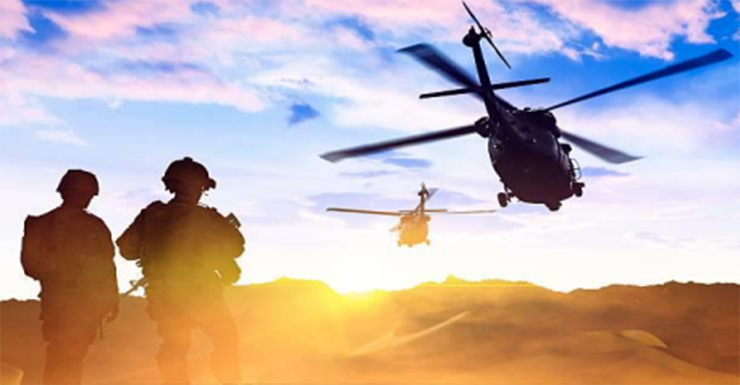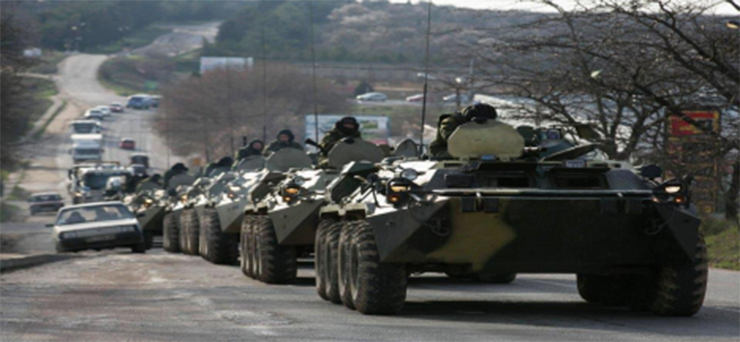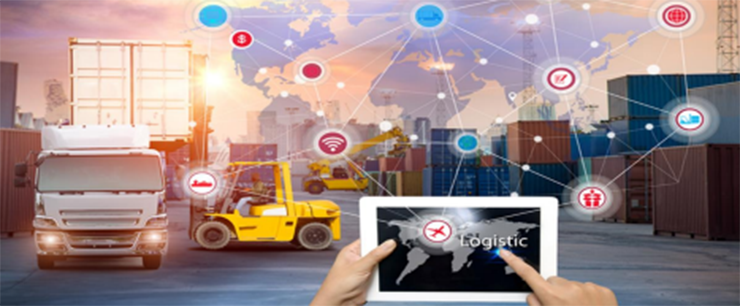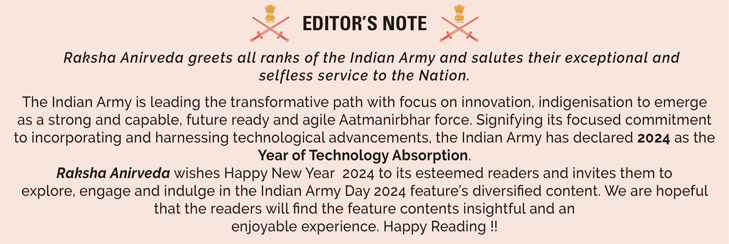
The Indian Army with its geographical spread across 29 states of the country probably has the most outstretched logistics chain amongst all armies of the world. In order for a fleet-footed army to serve its objectives i.e. win a war, it needs to keep on evolving enhanced capabilities taking into account the ever-growing threat. In the prevailing geo-strategic environment, the wars will be intense yet localised with conflicts over a short duration demanding the field forces to execute swift and hard-hitting operations. This would entail that all tools of war-waging machinery are homogenously integrated and well lubricated so that full potential can be directed at the adversary’s weakness to achieve the desired results. The success in modern wars will largely depend upon the ability of the Armed Forces to conduct operations seamlessly with a least logistic pause. In such a dynamic scenario, it is imperative to study the prevalent logistics supply chain system of the Indian Army which serves as the backbone for the flawless conduct of operations.
Future Capabilities
Ideally, combat forces are empowered by logistics, not encumbered by it. Army logistics will have to become more agile in order to cope with the demands of combat forces. The onus thus is on us to make the supply chain more responsive and agile. The need of the hour is towards identifying future capabilities
to ensure IA maintains its edge against adversaries through persistent, agile, scalable and resilient logistic support systems.
The military supply chain can be divided into three distinct chains. The first chain encompasses fast and light stores, the second chain deals with heavy equipment and the third chain deals with the deployment and movement of soldiers. Unlike any commercial supply chain, the Army supply chain is known to have reverse and lateral flows.
The Indian Army follows a multi-echelon system of logistics, wherein, the logisticians cater for the entire requirement of war-waging inventory running into almost one lac items. The inventory is placed in a number of echelons primarily the Central Depots, Regional Depots and dedicated logistics units with field formations. The holding of similar inventory in multiple echelons has its own ramifications.
When we think of a review of the present logistics model, we may have to re-analyse the present multi-echelon system, possibly reduce the number of Central and Regional depots (this exercise is presently on) and consider some for amalgamation. The second aspect, which would need to be addressed, would be a review of centralised and de-centralised holding of inventory as well as the quantum of holding of war wastage reserves. The next logical step would be to rationalise our present inventory holdings both in terms of range and depth. If these three important aspects are deliberated upon in the right earnest we would be able to streamline inventory holdings and reduce manpower of the tail (which has already been considerably reduced).
The supply chain in Army also suffers from long lead time, delayed decision-making, bureaucratic stranglehold, poor information quality, lack of information sharing and inadequate coordination. These issues need to be addressed to make supply chains more proactive.
Industry Orientation
We have seen in recent times how the industry has adapted itself to employ innovative methods of cost-cutting and improved efficiencies. One such measure has been to concentrate on the core activities and outsource the non-core activities. Individual companies have ensured that their supply chains are more resilient and competitive. It is to note that if any one link in the supply chain is disturbed, the entire supply chain gets stalled. Therefore, every supply chain model will have to have a contingency plan inbuilt. Resilient capabilities will have to be developed in order to respond to uncertainties. Warehouses will need to be relocated closer to users.
The private industry has adapted well to this model. The government can play a major role in supporting the logistic sector by giving focus on manufacturing and development of infrastructure such as roads, railways, ports, airports, logistic parks, warehousing and inland container depot, all under a digital umbrella to bring in effectiveness and efficiencies. India is keeping a close eye on Russia-Ukraine developments and calculating immediate and long-term impact on the country’s defence capability. The lessons learnt clearly indicate the need for self-reliance and therefore no longer lip service can be given to “Make in India”.

Military supply chains can modify some of their processes similar to commercial distribution processes. Like retailers, goods delivered by manufacturers to regional depots should be packed into containers to meet the user requirements. The military has regional hubs that distribute containers for different bases. The military can set up truck routes for its bases that are very much like Wal-Mart’s truck routes for its stores, they can adopt distribution efficiencies to be monitored and evaluated for its effectiveness.
Technology Adaptation
Technological advances to improve operations and profit margins are prominent within the supply chain services industry. The future supply chains will continue to include emerging technologies which supply efficiently using automation. Combination of technologies such as AI, machine learning, and predictive analytics provid a base for companies to manage complex supply chains. The use of technology has reduced the scope for human error thereby saving time and effort as well as money. Aspects such as demand forecasting, once automated, have taken the process to a far more precise level by monitoring the demographic and weather conditions, social media and reviews. Therefore, a few technologies which can be adapted well to military logistics and supply chains are being discussed here.
Blockchain. Blockchain is expected to track details right from order initiation at the customer level to shipment information, resulting in creating more visibility within a supply chain. Blockchain is allowing all parties to access accurate real-time information anywhere, anytime. The payoffs achieved would be avoidance of duplication of data, immediate retrieval of information, data available in multiple servers and verified transactions.
Drone Technology. Drones are estimated to be the future of the last-mile delivery vehicles in supply chains. UAVs are already in active logistic services. In recent times, drones have been successfully used in aerial photography and videograph, construction, search and rescue missions, mining activities, security, and scientific research. Apart from that, companies are planning to use drone technology to simplify their supply chains. For instance, last-mile delivery has always been a problem for logistics companies. Drone technology can bypass the traditional road network and deliver packages, saving companies fortunes in fuel costs and delighting the customer with instant deliveries. Drones can play a significant role in complementing the existing transport services by responding to supply-chain bottlenecks, such as access, time and speed. Drones can be actively used for inventory management, building inspection, intra-logistics, security, and yard management.
Additive Manufacturing. Additive manufacturing using 3D printing technology is already transforming some industry supply chains such as the manufacture and assembly of aircraft. 3D printing technology is expected to penetrate the consumer demand economy, and in many sectors could turn the conventional “plan, source, make, deliver” supply chain on its head.

Digitalisation. Digitisation has touched upon all aspects of businesses, including supply chains. Technologies such as embedded sensors, GPS, and RFID have helped companies transform their existing traditional (a mix of paper-based and IT-supported processes) supply chain structures into more agile, flexible, open, and collaborative digital models. Digital transformation in SCM enables organisational flexibility and business process automation, and accelerates innovation in SCM.
Internet of Things (IoT) Internet of Things (IoT) is a revolutionary technology for every major industry retail, transportation, finance, healthcare and energy. The IoT is a collection of interconnected physical devices that can monitor report on and send and exchange data. IoT devices are typically connected to computer systems via data or Wi-Fi networks. The IoT shows its potential to the fullest in processes like supply chain. In SCM IoT refers to connecting various data points (devices used as part of the supply chain) to achieve a final outcome such as higher operational efficiency or better forecasting of product demand. Machine learning can help demystify the hidden patterns in IoT data by analysing massive volumes of data using sophisticated algorithms. Machine learning inference can supplement or replace manual processes with automated systems using statistically derived actions in critical processes.
Digitalised Supply Chain Models
In order to take maximum advantage of digitised supply chain models, it is important that organisations make it an integral part of the overall business model and organisational structure. In a typical supply chain, the flow of goods and services involves sourcing and procuring raw materials and parts, designing and making a product, estimating the demand, arranging sales channels and logistics, and then providing customers with visibility into their orders. A digital supply chain, in contrast, provides significantly more visibility into the workings of the chain. It is the process of integrating and applying advanced digital technologies into supply chain operations, from procurement and inventory management to transportation and distribution.
AI and Machine Learning (ML) are already beginning to change the face of the supply chain industry. By culling out deep-rooted inefficiencies and uncertainties, AI and ML drive enterprise-wide visibility into all aspects of the supply chain with granularity and methodologies that humans simply can’t mimic at scale. AI in supply chains is helping to deliver the powerful optimisation capabilities required for more accurate capacity planning, improved productivity, high quality, lower costs, and greater output, all while fostering safer working conditions.
Recommendations. A few recommendations to improve upon the existing logistics model of the Indian Army are discussed here.
Build Domestic Production Capacity. For those supply chains that are critical for national defence, the country should be committed to ensuring reliable production access within the defence industrial base.
Conduct Data Analysis. Indian Army should continue to build on previous efforts and learn to expand its visibility into supply chains by collecting and organising key data.
Collaborative Forecasting and Planning. The Armed forces should signal to the industry what the likely total demand is across multiple programmes, so the industry can better anticipate the number of orders. There must be on-hand visibility and availability of data across services, particularly at the distribution centre level for capturing and analysing demand patterns. This is particularly important when the Army places orders on the ordnance factories and the PSUs.
Develop Common Standards. To leverage commercial sector innovations, and to embed modernising technologies in weapon systems, the armed forces should work, where possible, to limit its use of service-unique requirements when developing qualitative requirements.
Update Acquisition Policies. Armed forces should engage in efforts to develop a whole-of-government strategy and implementation plan to engage with industry and other ministries to determine which policy and regulatory changes would encourage the expansion of capabilities.
Strike a Balance. As is always the case for modernisation, armed forces will have to strike a balance between pragmatic, less costly solutions and investments in shiny gadgets. The interest in green technologies, AI and robotics is that they lie in between: shine as they may, cost-effective, pragmatic solutions are not out of sight. Be it incrementally retrofitting aircraft with artificially intelligent avionics or 3D printing items aboard frigates, such changes increase the speed and volume of logistics.
Conclusion
Therefore, the goal – and the advantage – of more efficient and distributed logistics operations would be to unlock the potential to reinvigorate combat troops within the armed forces. Through successful implementation, enhanced operational readiness and mobility would be within reach if freed resources are fed back elsewhere into the system.
The diversity of terrain and the armed forces’ operational roles pose enormous logistic challenges; these require a dynamic, new approach to logistic support. The vision for the future is to develop a logistic system which is highly effective and responsive and provides the operational commander with the freedom and ability to execute his mission successfully. The ‘footprint’ of logistics should ensure a seamless and fully networked system that provides information and situation awareness to enable asset visibility and enhanced velocity of logistic support. Concurrently, there is a need to reduce inventories significantly and rely on predictive and real-time information, coupled with rapid transportation, to meet user demands.
Harnessing advanced information technology, the use of sensors and reliance on decision support systems will improve logistic efficiency and enhance operational readiness and, thus, reduce the number of personnel involved in the SCM. These advancements will significantly impact our operational and logistic philosophy for which future commanders must prepare and ensure a smooth change in logistic management.
In the end, do remember what Dwight.D.Eisenhower said, “You will not find it difficult to prove that battles, campaigns and even wars have been won or lost primarily due to logistics.”
-The writer is a former MGAOC Central Command. He has served in various important assignments in the Indian Army in Jammu and Kashmir and the North-East. He covers defence issues on various national TV channels. His recent book, “Breaking the Chinese Myth”, has been a best-seller on Amazon. Views expressed are personal and do not necessarily reflect the views of Raksha Anirveda











